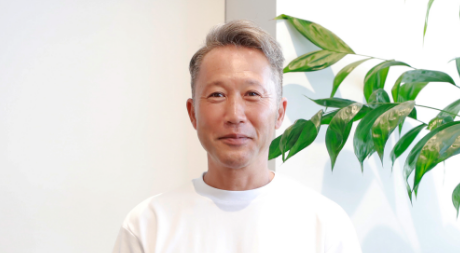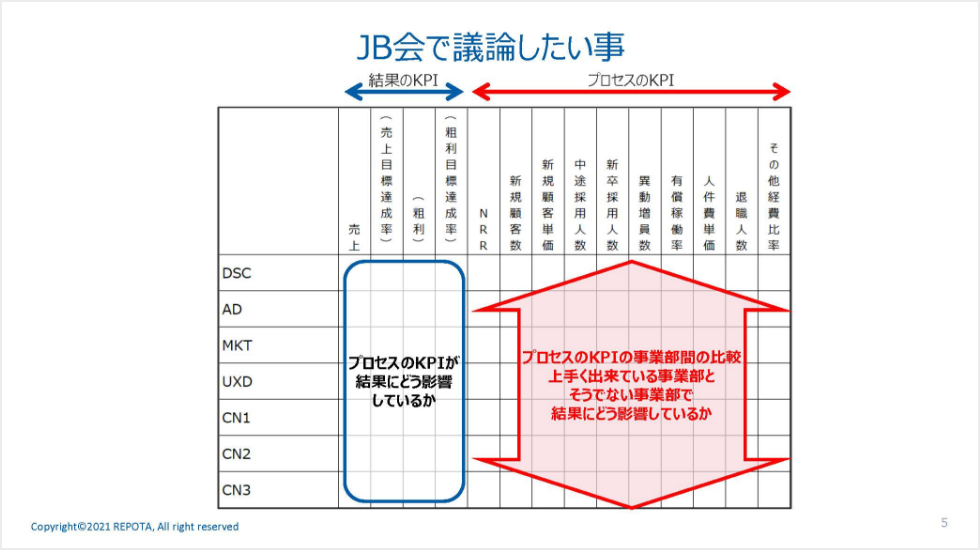With support from Repota, AMBL Inc. succeeds in adopting a new outbound sales strategy and acquiring new customers
AMBL Inc. is a DX company that specializes in the use of AI. After deciding to shift from an inbound to an outbound sales style, CEO Masahiro Mouri approached Repota for help in implementing this shift. Here, we speak to Mouri about his reasons for choosing Repota, what support he received, and how this support contributed to a change in the consciousness of his company’s sales representatives.


AMBL Inc.
- Address
- 10F Art Village Osaki Central Tower, 1-2-2 Osaki, Shinagawa-ku, Tokyo
- Establishment
- March 9, 2001
- Industry
- DX support business
- Capital
- 79.92 million yen
PROFILE

AMBL Inc.
CEO
Masahiro Mouri

REPOTA Corporation
CEO
Toyoaki Nakano
AMBL approaches Repota for help in systematizing a new sales style
- Nakano:
- To begin with, I would like to ask you why you approached Repota for help. What issues did you wish to resolve?
- Mouri:
- I approached Repota back in 2021, before we changed our company name to AMBL. This was a time when I was thinking about the sort of sales style we should adopt. When seeking to attract new business, I myself would prioritize the acquisition of new customers—but such an approach was not yet widespread in the company.Although we were fortunate to have high-quality customers, we only handled inbound requests. For this reason, if we wished to grow further as a company, then in my opinion it was imperative we incorporated some outbound sales styles. While we were centralizing our sales functions, I was introduced to Nakano by AMBL’s COO Akiyama.
- Nakano:
- Yes. To begin with, I asked you what your company’s goals were.
- Mouri:
- My professional career up to that point had consisted of working as a sales representative. However, I had had no opportunities to learn about sales in a systematic manner—nor to pass on my own knowledge and experience about sales. I had developed an idiosyncratic sales style that relied on intuition; I didn’t know how to visualize this style—or the skills I had cultivated through interactions with our customers. However, in our first meeting together you provided the answer. I remember clearly how, while looking over some Excel documents, you showed the future direction our company should take. Our meeting took place at a Japanese-style bar in Gotanda, Tokyo, and I kept repeating out loud: “This is how I want to manage my company!”
- Nakano:
- After our meeting, I was impressed by how quickly your company acted, immediately preparing lists of projects. With regard to your current sales activities—am I correct in thinking they are now closer to what you envisaged during our conversations at the bar?
- Mouri:
- Yes, we are moving closer to the style I had envisioned—although, we are facing a dilemma, in that our company is not reacting as quickly as I would like to the numerous realizations you inspired. To take one example, when it comes to making management decisions, we have started to implement business intelligence tools to visualize various types of business data. In this respect, I can feel our company has taken a step forward.

Repota demonstrates first-hand how to carry out sales activities
- Nakano:
- After that, we established an extremely rigorous training program for about 20 sales representatives; we urged them to think about various issues over and over again, and to keep the “Five Ws and How” in mind at all times to ensure there were no omissions in their thinking processes. And, to ensure they did not forget what they learned, we sent follow-up emails asking them the answers to different questions after they had completed their training. Using the sort of training apps that students use to prepare for exams, we also repeatedly asked them questions on various issues.
- Mouri:
- I still have that app installed on my smartphone. It sends you a notification just when you’re about to forget, so it helps you to memorize things efficiently. I myself had instigated this training, urging our representatives to incorporate new sales approaches—I am therefore delighted to see a change in the participants.
- Nakano:
- Unfortunately, the pandemic meant much of the training was carried out online; nevertheless, we attended meetings you had with your customers, and participated in your exhibitions. We wanted to establish a reference point for your representatives—to show them examples they could follow first-hand.
- Mouri:
- Yes, I remember you helping us attract customers in front of our exhibition booth! The theme of our exhibition was “RBO-Field and AI.” I was excited to see widespread acceptance of our products, and it was clear that our employees were growing in confidence.
- Nakano:
- An extremely large number of people were interested in and visited your booth. If I recall correctly, you received hundreds of name cards.
- Mouri:
- Yes. In fact, our company is trying to form a partnership with an AI platform provider we met at the venue. I know that exhibitions do not lead to immediate results, but I was once again struck by the fact that they are good opportunities for creating new projects, and that it is important to continue promoting our products. Going forward, I would like us to participate in one or two exhibitions a year.

A significant shift in the way AMBL sales representatives interact with their customers
- Nakano:
- At the beginning of 2023, we held a training camp for the executive and managerial members of your company. Looking back, what are your thoughts?
- Mouri:
- Yes. The training camp stemmed from a desire of mine to know how the management should go about teaching employees how to formulate account plans. In fact, after participating in the training camp, the way we deal with one of our customers who is a leading systems integrator has changed. Previously, we would only approach its telecommunications department; since the training, however, we have actively opened new lines of communication with other departments. We have already secured appointments, and we have reached the point where we can move on to conducting sales activities. Now, our employees act with great enthusiasm and are extremely proactive—this is something that would not have happened without making account plans. The training camp was extremely meaningful—it convinced me that, if it becomes the norm at our company, then this proactive sales style will lead to major change.
- Nakano:
- When preparing the training camp, we considered some of the issues your company faces. Your sales representatives act with great enthusiasm when presented with a new project, but their relationship with their customers tends to peter out if negotiations come to a standstill. I felt that this was a great waste. The same goes for the exhibition we were talking about earlier, too. If you can create points of contact with potential new customers, you want them to develop into long-lasting relationships. This is why I participated in the exhibition. Instead of a sales approach in which you focus solely on acquiring new projects, I believe it is important to plan how you interact with other companies; and you must use what you have learned from past failures to inform your future sales activities.
- Mouri:
- If the training camp can inspire us to do something similar to Accenture—a company you previously worked at—then we should be able to come up with some truly splendid innovations.
- Nakano:
- After the training camp had finished, I attended one of your company’s management meetings. I was delighted to hear participants providing dynamic suggestions, such as: “Let us identify and target the strategic growth businesses of our customers,” and “Let us expand our existing frameworks horizontally.”
- Mouri:
- After attending the camp, I have noticed a great change in my own behavior as well. Today, I participated in a meeting to come up with ideas related to human resources; when I was briefed on various projects, I found I was able to consider the wider circumstances faced by our customers. One of our customers, for example, is a leading telecommunications operator. The company is developing an AI system capable of assessing the state of deterioration of its mobile phone base stations and, to this end, they required human resources who specialize in the Python programming language. Normally, someone in our company’s position would turn their attention to how to find talented personnel; but I was even able to envisage how the base station operates. As anyone who watches the news knows, one of the problems facing the telecommunications industry is a decline in call quality. And when you consider the profit structures of these operators, it is clearly difficult for them to attract new investment. This makes it easier to understand why such companies are now working to improve the functions of their existing base stations. Learning to build hypotheses in this way has shown me that our company is in a position to make proposals to other companies in the telecommunications industry, too. It is thanks to your “Five Ws and How” approach—and the repeated questions on various issues you made us answer—that I am now capable of extracting so much from a single project. I have also come to understand the importance of communicating what I have learned to our sales representatives. So now I frequently say things like “It would be great if we could come up with ideas like this”—although, of course, I have no intention of revealing the answers to them. If I lead by example, it will encourage our sales representatives to think: “I have to learn how to think and act in the same way as Mouri.” Repota’s support has led to outstanding results at AMBL. This is something I would like to other companies struggling with how to train their sales representatives to know.
A new goal of “ambidextrous management”
- Nakano:
- At the training camp, we also touched upon KPIs. After that, you spent three months collecting data, as a result of which all your departments were able to see the same quantitative KPIs. Is that correct?
- Mouri:
- Previously, when I was a sales representative, I was the sort of person who quantified everything—including my behaviors—in order to meet my sales goals. So, when setting goals for our sales representatives, I believed it was essential to carefully manage everything quantitatively—from numbers of appointments to number of sales—so that they could focus on the task at hand. This system is still not functioning in an entirely satisfactory manner. However, all our sales representatives now understand the importance of interpreting what they have to do from the quantitative goals they have been set. I therefore feel we have successfully taken the first step.
- Nakano:
- It may be that you need to manage their performance through process-oriented indicators, and not results-oriented indicators. If they follow the process and the results follow as a consequence—only then will they understand how to use the system properly.
- Mouri:
- Yes. Unless you consider the processes required, you will not see the results you desire.
- Nakano:
- At a certain meeting, COO Akiyama told the heads of various departments: “When it comes to process KPIs, I don’t want you simply to report the results.” I very much agree with what he said. I immediately contacted you, and advised you to reconfirm your KPIs. Rather than just chasing numbers, it is extremely important to consider how you intend to use them.
- Mouri:
- Once you’ve reached this level, you develop the ability to make various predictions yourself; it makes work much more enjoyable. Rather than operating blindly or randomly, you become capable of carefully setting goals and acting in line with these goals—and this helps you streamline your own actions, too.
- Nakano:
- Through our conversations, I get the feeling that your sales representatives must strike a balance between two different sales methods: making company visits on the one hand, and adopting a more scientific approach on the other. It is no good if either one or other is lacking—finding the proper balance is crucial.
- Mouri:
- To begin with, I also focused on visiting potential customers in person. But when I wanted to achieve better results, I began to feel that company visits alone were insufficient. This is something that struck me when you used the phrase “scientific approach.”
- Nakano:
- Two years ago, you said that one of the issues you faced was transitioning from an inbound to an outbound sales approach. As an attendee of your company’s Regular Sales Meetings, it is clear to me that you have made progress on this point.
- Mouri:
- My ultimate goal for our company is much higher; nor am I satisfied with the speed with which we are changing. Overall, however, it is as you say—we must have grown a little.
- Nakano:
- The number of new customers you have acquired has grown as well, I believe.
- Mouri:
- If we can acquire one or two new customers by casting our net wider and deeper, then I believe that AMBL will change even more for the better. When I established AIfield Company, I was given a book about “ambidextrous management.” I am just re-reading it now. It explains the necessity of both “exploration” and “exploitation” when it comes to business management. However, when running a company, there is a general tendency to rely on “exploitation”—and refining one’s existing businesses, in particular. This is not necessarily a bad thing. But since the world is undergoing remarkable change, if we focus solely on exploitation, it becomes difficult to adapt and keep up when trends change—and that goes from a technological point of view as well. Thus far, our company has focused solely on exploitation, but I would like us to establish systems that facilitate exploration, too—and that includes incorporating the sales approaches you espouse. During my time as CEO, I would like us to achieve a strong balance between exploration and exploitation, and lay the foundations for becoming a company that continues to exist 100 years into the future.
- Nakano:
- Yes, you are right. A focus on exploitation alone will invariably lead to price competition—exploration is therefore also important. And this goes not only for your sales style, but also for the services and products you deal in as well.

Direct instruction from the CEO to second-year graduate recruits
- Nakano:
- Having overcome extreme challenges to establish your business foundations, what sort of company do you wish to become in the future?
- Mouri:
- I established the Sales Management Department out of a desire to create a sales team capable of understanding our entire company. The Sales Management Department can’t function properly unless it deepens its understanding of the initiatives of other departments. I initially worried it might have been premature to establish such a department, but now I think “I want to resign as President and become head of the Sales Management Department!” That’s how much I have invested in it.
- Nakano:
- Yes. If sales representatives are assigned to a single department, they may be capable of upselling but not cross-selling. Even if the opportunity to cross-sell arises, they may not be able to take advantage—or they might not even recognize such an opportunity if it comes up. I imagine this is why you are so invested in refining your organization, developing your human resources, and establishing new systems.
- Mouri:
- Recently, I have started to provide direct instruction to graduate recruits in their second years. This was something I had previously avoided due to various misconceptions. In fact, Full-Time Outside Auditor Watanabe encouraged me, saying: “The company will have no objection at all to your teaching them.” I teach them with the help of the management. I begin by advising them to move away from sales methods in which they try and force their account plans and products onto the customer. Instead, I encourage them to create a Venn diagram comprising two circles: one represents the issues faced by our customers; the other represents our company’s products and services. The overlapping region demonstrates how our company can help. Our second-year employees already understand what I am saying. In their own ways, they are beginning to recognize the importance of identifying what issues our customers face. The next step is to teach them how to carry out research. After that, they will have the capacity to turn what they have learned into action, and try to understand the “Five Ws and How” themselves. Providing instruction to all our second-year employees is difficult. However, I select a number of targets for each of our departments; I get them to accompany me on my presentations, and learn both what sort of questions our customers ask and how I respond; and I make time to talk to them over a cup of tea. I teach them what proposals to make in response to different customer needs—everything from background motives to more overt aims. If I can nurture these young employees, I believe they will help me achieve my goal of creating the ideal company.
- Nakano:
- Fantastic. One thing that worried me about your company was the lack of consistency. The agendas of your regular meetings would suddenly change, for example; or, when you encountered difficulties, you had a tendency to create materials that were full of text rather than concrete numbers. If you remain consistent, you will invariably become aware of new things. If your custom of directly teaching second-year employees becomes firmly established—then those young employees, who have a long future at the company, will learn to modify both their own approaches and your company’s systems in a consistent manner. As you look to create a company that continues to exist 100 years into the future, there is no doubt that the young employees of today will be key. And for the next 30 years or so, you will have the pleasure of walking side by side with them.






